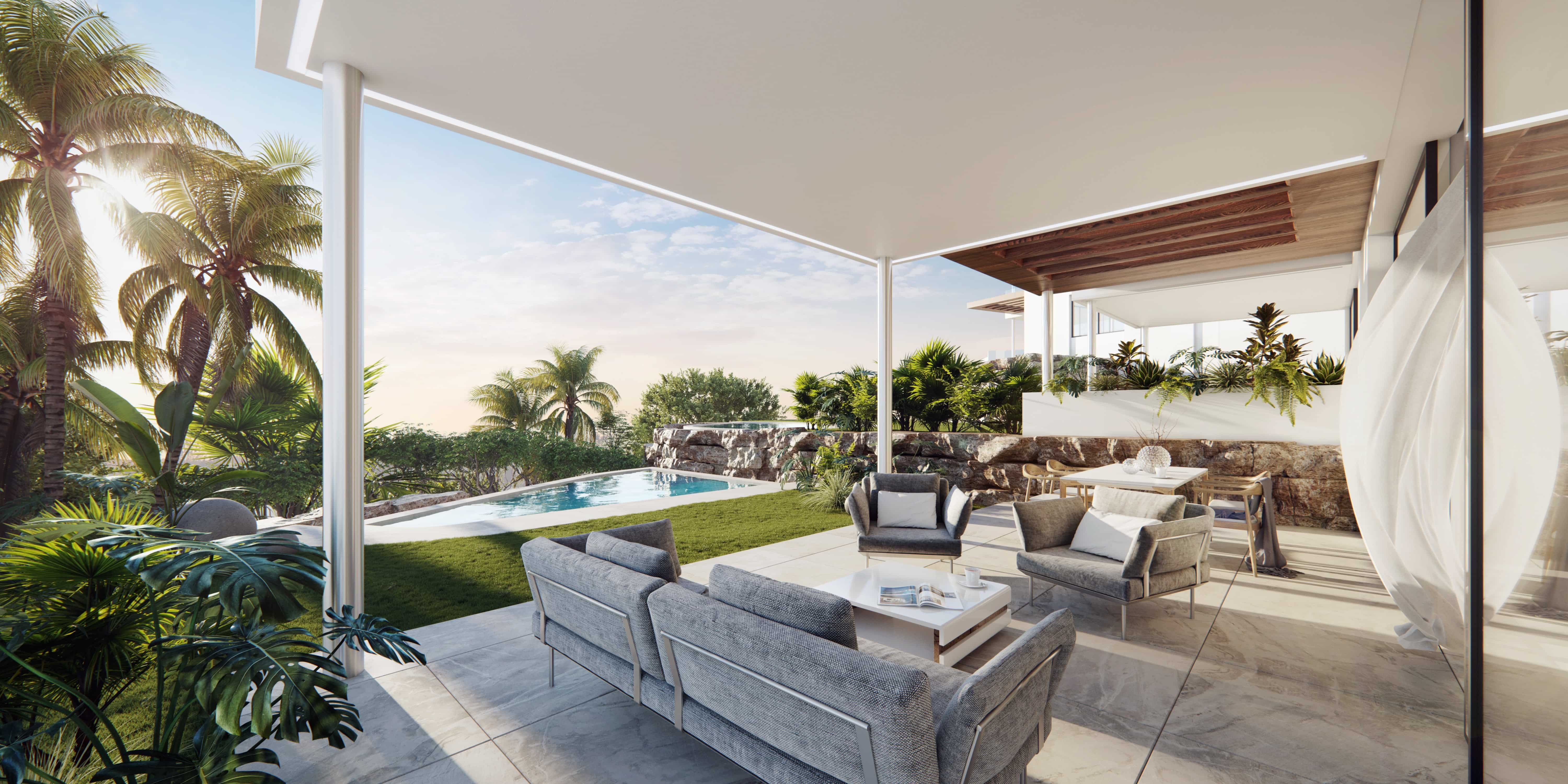The power of realistic rendering in movie making and video gaming is no surprise for anybody. 3D technology is also solving lots of problems in other industries, such as manufacturing, medicine, arts, marketing. And of course, 3D visualization simplifies numerous tasks in design and architecture.
What is 3D rendering for architecture and how can you benefit from realistic visualization? Let’s find out.
IMAGE: VISENGINE
Fruitful Benefits Of 3D Rendering For Architecture
It Helps To Visualize The End Result
3D Visualization comes in handy when there’s the need to model the way the project will look and feel once it’s finished. Since the ultimate purpose of good design is to make people’s lives better, a compelling visualization is extremely valuable for architecture.
What looks flawless on paper will not necessarily fit perfectly in the context of a daily life. This technology enables architects to experiment with materials, colors, and environments. Lack of applicability to the real-life circumstances, which used to be a serious problem in the past is almost eliminated now thanks to 3D visualization.
Still, it’s easier said than done, and creating a high-quality 3D visualization requires great effort. In most cases, a top-notch and 100% accurate modeling can only be done by a full-stack team of 3D artists. Some agencies have their own in-house department dedicated solely for visualization purposes.
Others prefer to outsource this task to 3D rendering studios. Every architectural company decides what’s best for them based on the available resources and the needs of their business. There are benefits and drawbacks to both, so you should evaluate the risks and clearly spell out your deliverables, like how many projects do you need to complete at once, how fast do you expect it to be done, etc.
IMAGE: VISENGINE
It Fosters Better Emotional Response In People
No matter if it’s a commercial object or not, at the end of the day, the only thing that matters is how people will react to your project once it becomes a part of their lives. Every buying decision in the history of humans is driven by emotions. We don’t buy an apartment, we buy comfort and security. With that being said, an architect needs to make one’s project visually appealing and ensure that it evokes the right emotions.
Whatever it is that you design, it needs to give people the right feel and convey an appropriate message. All architectural projects have their purpose. You don’t want a small suburban family residence to have a vibe of a sleek office building in the city center. In other words, it has to communicate the right message.
People love stories. Every major decision we make depends on what stories we tell ourselves. For example, when choosing a travel destination, you’re not being very pragmatic. You don’t usually go someplace just because it’s two hours drive from your city.
What makes you want to fly off to Paris is a potential experience that you’re going to have there. A beautiful scenery of Eiffel tower, a fresh-baked croissant with a cup of fragrant coffee for breakfast, the inimitable charm of cozy Parisian streets, right? The same works with your potential customers.
It will tell its own story. With the help of 3D visualization, you’ll be able to achieve a similar fresh-baked croissant effect that will ultimately make them buy from you. Voila! A realistic depiction of the location placed in context will create the desired mood.
This is the case where 3D visualization helps a lot. By adding small details and placing the project in the right context, an architect can communicate one’s idea to the viewers. This is the task that’s impossible to execute in 2D. A high-quality 3D visualization is enough in itself to let the viewers know that this project will make an awesome bustling mall or a comfortable villa by the beach.
It’s A Great Addition To Your Portfolio
Remember the times when architects used to wait for the construction to finish so that they could photograph the object and add it to the portfolio? Now, there’s no need to wait. You can have a high-quality 3D visualization of your project before it’s even approved by the investors.
In fact, a 3D rendered model is what might convince investors to go for your project in the first place. Time is money, and contemporary business cannot pause. A killer portfolio will certainly make a difference for your career as an architect.
Even if a project won’t get the funding, you can still keep a 3D model as an illustration of your creativity and professional skills. If you’re productive enough, you’ll easily fill up your portfolio with great projects in a few years. This is the perfect opportunity for beginners.
To sum up, 3D rendering brings massive benefits to both the companies and individual architects. It’s a perfect selling point and an excellent portfolio generator. So don’t hesitate to take action and hire 3D visualization team that will help you execute on your craziest ideas.
If you are interested in even more design-related articles and information from us here at Bit Rebels, then we have a lot to choose from.



COMMENTS